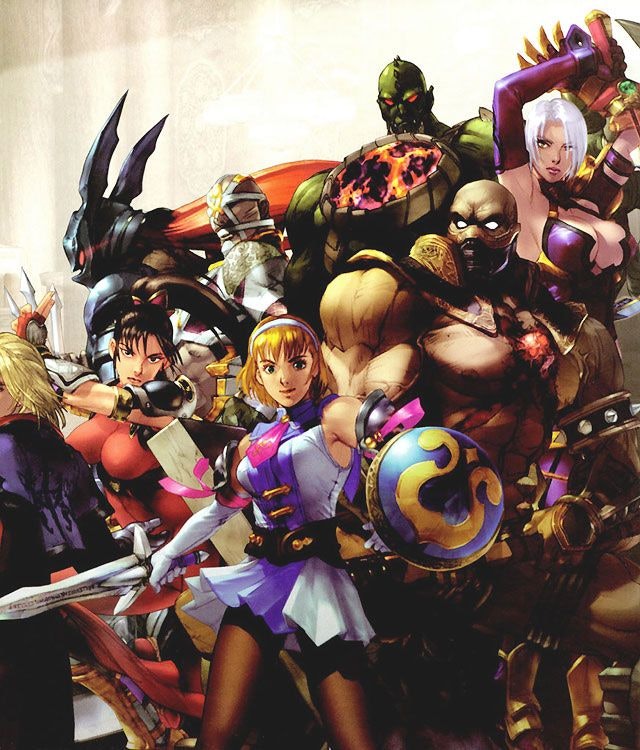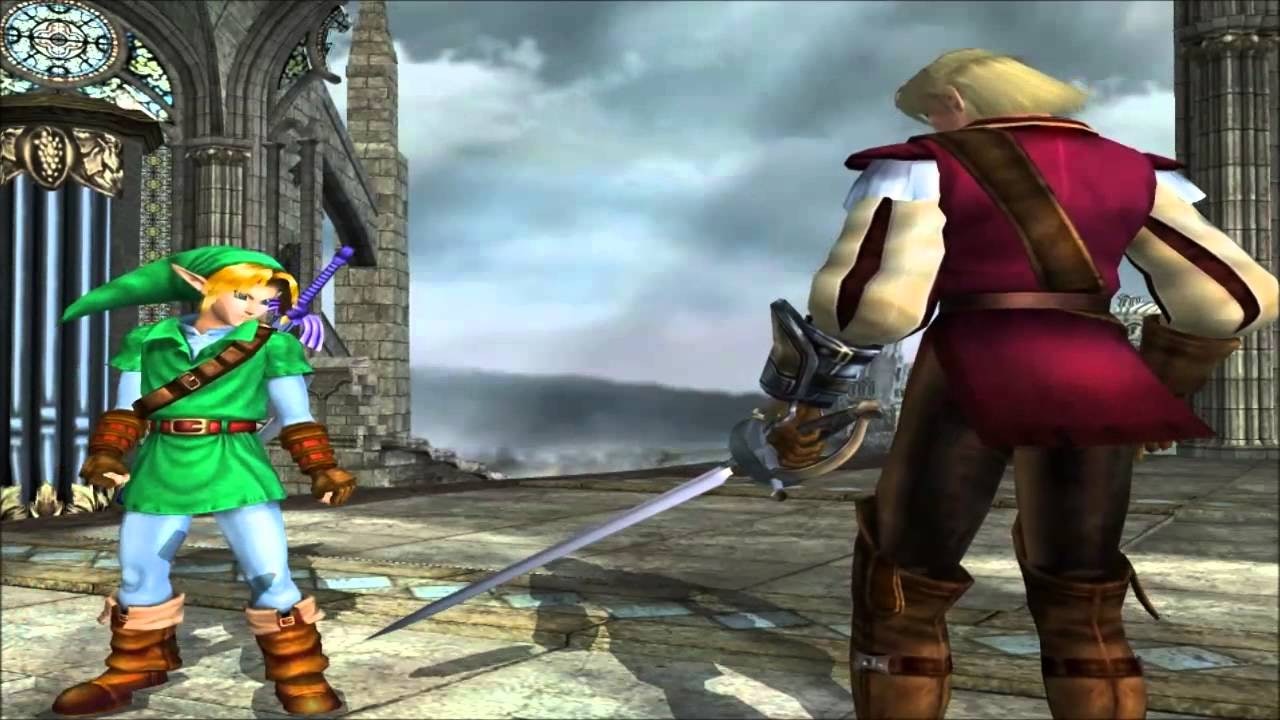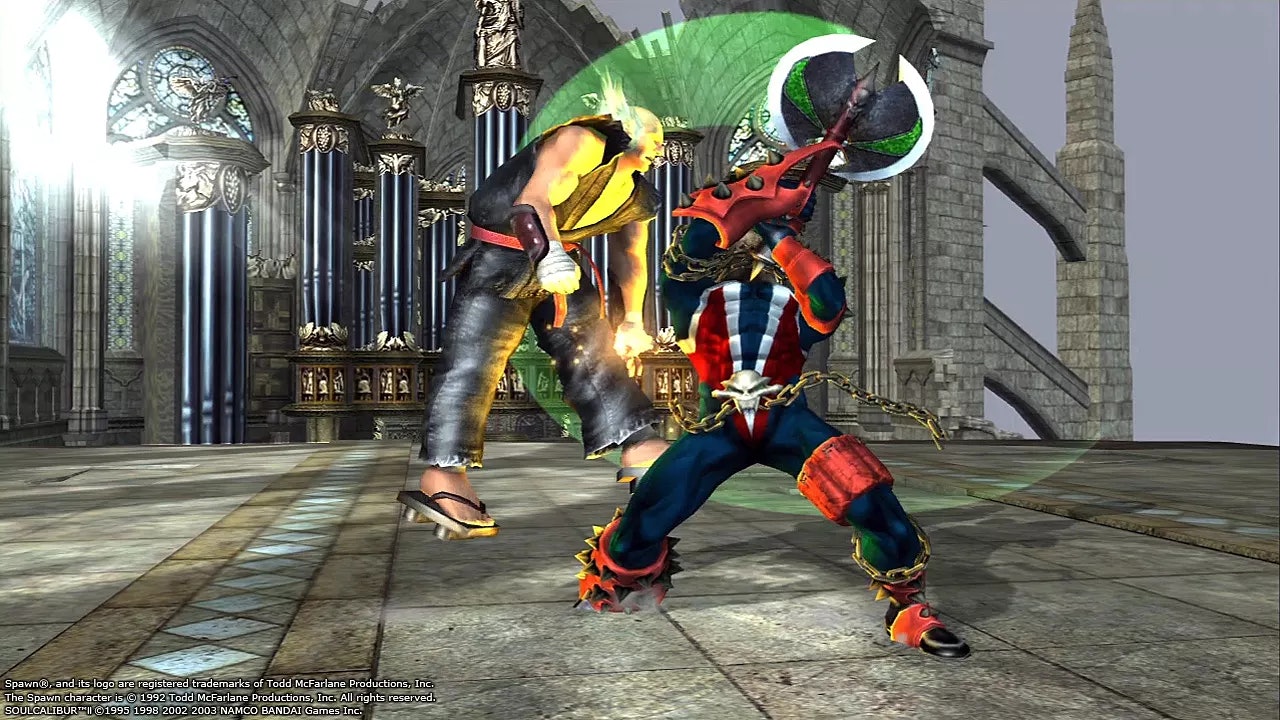
As a GameCube kid, I was often stuck platforming and racing with Mario. But the most memorable bit of more mature violence I experienced in a video game came from Soul Calibur II. It was my introduction to the genre and the only fighting game I’ve ever been able to excel at without straight button-mashing.
While it’s never been in the same echelon as fighters from Nintendo or Capcom, Bandai Namco’s sword-slinging fighting series has maintained a solid fan base over six mainline titles. It started in 1995 as Soul Edge, an arcade exclusive impressive for the time that had multiple game modes and simpler weapon-based play. It was revolutionary in a way that made fighting games more approachable, and it was widely loved enough to warrant a 1998 sequel in Soul Calibur.
The first named entry introduced 8-way combat (which added three dimensions of movement rather than the linear back and forth) broadened the playing field and allowed players to roll to dodge attacks. But Soul Calibur 2, released in March 2002, was where the franchise truly found its footing, emphasizing what made it unique in an often overcrowded subgenre.

With a robust single-player mode, collectible weapons, and a roster of memorable characters, Soul Calibur 2 was the kind of game you play until the disc is scratched beyond repair. It had a 21-character roster, each more fascinating than the last: Siegfried the knight, Cervantes the dashing pirate, and … whatever Voldo is. They were my punching bags as I won matches and learned combos.
But its console-exclusive characters made having the GameCube version the best flex. Xbox had Todd McFarlene’s edgy anti-hero Spawn, the PlayStation 2 had Tekken’s mustachioed badass Heihachi Mishima, but the GameCube had the heroic Link from The Legend of Zelda. My friends were stuck with a C-grade superhero or a fighting game villain, while I could wield the Master Sword as Nintendo’s best silent protagonist.
It was neither an evil plot nor world-bending doom that brought these characters together; It was good, old-fashioned corporate synergy. Sega, Nintendo, and Namco announced in 2002 that they collaborated on the Triforce game board. Built on GameCube technology, the board was used by Sega and Capcom in arcades during the early 2000s, bringing these tech juggernauts to the same bargaining table.
“We are expanding our collaborations,” Shigeru Miyamoto (who was just a software designer at the time) said at a joint press conference with Nintendo and Namco in 2002. “We are trying to utilize the game-developing expertise of other companies."
But originally, Heihachi wasn’t supposed to be the PS2-exclusive character. Soul Calibur 2 localization producer Nao Higo told Giant Bomb that Cloud Strife from Final Fantasy VII was originally supposed to be Sony’s fighter, but the deal fell through at the last minute. Cloud would have been a perfect choice, matching his Buster Sword against Nightmare’s giant-eyed Soul Edge.

Thankfully Namco managed to find a quick replacement, pulling from another of their franchises with Tekken’s Heihachi stepping into the ring, He’s still one of the only characters in the franchise without a weapon, having brought only his fist to the sword fight.
Spawn originates from comic books, though he has appeared in a few of his own mediocre video game titles over the years. Spawn: Armageddon was produced by Namco and McFarlane Toys made Soul Calibur figures, so the brand synergy just made sense. McFarlane also designed Necrid, a fighter in Soul Calibur 2 with a giant blowing orb on his chest.
Having random guest characters to boost sales is now considered a popular play feature, but Soul Calibur 2 came out years before Super Smash Bros. Brawl brought non-Nintendo characters into the ring with outside IP. Bandai created a multiverse of content that other Soul Calibur games have added to. Yoda, Darth Vader, Kratos, Geralt, 2B, and Lloyd Irving have all been guest characters in different Soul Calibur games.
As video games get sequels, their previous versions often get forgotten. Especially in the realms of fighting games, where a new entry can completely sap the previous iterations' fan base. Even genre staples like Super Smash Bros. Melee and Street Fighter 2 have much smaller scenes than their current generation counterparts. But those old versions were crucial stepping stones, building on the core gameplay and changing its DNA in great (or potentially awful) ways.
Soul Calibur 2 made guest characters cool and started a chain of multiversal madness that we never escape.







